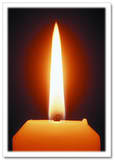

"Fain would they put out the light of Allah with their mouths, but Allah will perfect His light however much the disbelievers are averse." — Holy Qur'an 61:8
:: Post No. 7: Reciting Volumious Angelic Salwat and Dhikr Tasbis ::
Sunday,
Jul. 13, 2025
Bismillahir Rahmanir Rahim
In the name of Allah, the Most Beneficent, the Most Merciful.
Ya Ali Madad! This post has three parts.
1. Selected verse from beautiful ginans of our Holy Pirs;
2. Knowledge Section; and
3. Angelic Salwat Dhikr.
Part 1: Teaching of Sayyed Khaan (r.a.)
The following verse is taken from Sayyed Khaan's Hu(n) re piyaasi piya tere darshanki:
| Eji | Didaari hove so esa chahaave Sahebji-ku(n) chhod kar orku(n) na dhiyaave Didaari hoy so dil baandhe Din din adka neh dhare Ek man ho kar naam leve Piyuka darshan so kare ji |
7 |
| O Believer | He who desires the vision (didar) of the Holy Imam should not pay attention to anything other than the Master. He who has this goal attaches his heart to Him through dhikr, and increases his love for Mowla day by day. By invoking Mowla's name (i.e., by permorming dhikr) with the singleness of mind (i.e., with full concentration), he achieves the vision (didar) of the Beloved. |
7 |
Dhikr is a vast topic and can be performed in several ways. The most common method in our tariqah is collective remembrance (Dhikr-i jamat). In this type of dhikr, all the members of the congregation participate by performing dhikr with their voices or silently. For example, during Jamati Mushkil aasan satada, we say a special tasbi collectively with our voices and then say another tasbi silently while standing.
We also practice individual remembrance (Dhikr-i fard) at various times of the day so that our souls remain in contact with our Mowla. For example, we say Ya Allah, Ya Ali, Ya Muhammad.
Bandagi is a very special silent luminous dhikr which is done with a luminous word (bol, Ism-i azam or with the name "Ya Ali") at a luminous time (Noorani waqt) which is a special time before sunrise.
Part 2: How should I perform Dhikr and what are its benefits?
In order to answer this question, let us study the following:
I have articulated a separate, 40-day project titled Forty Dhikr Tasbis With Explanation'. For this project, I have researched forty luminous prayers and have provided extended explanations for each one of them. The start date for this project can be customized so it can be conducted in a 40-day format as shown on the schedule page.
In his firman to the Canadian Jamat in 2005, NOOR Mowlana Shah Karim Al-Hussaini (a.s.) bestowed the dua for sunshine in our hearts. This can be achieved if our hearts reach a state of constant dhikr.
Dhikr can empower a mumin to submit spiritual and luminous nazranas to our beloved NOOR Mowlana Hazar Imam. A Spiritual Nazrana takes the form of a pure golden heart which is in a state of constant dhikr while a Luminous Nazrana takes the form of a sound golden heart (qalb-i salim) which is in a state of constant dhikr and enlightenment.
Part 3. Angelic Salwat
Let us recite angelic salwats to invoke Divine grace and mercy.
Bismillahir Rahmanir Rahim
In the name of Allah, the Most Beneficent, the Most Merciful
Allâhumâ salli alâ Muhammadin wa âle Muhammad:
O Allah! Bestow Peace on and through Muhammad and his Descendants
or
Al-hamdu lillahi rabbil 'alamin.
Praise be to Allah, the Lord of the worlds!
Haizinda — Qayampaya
(Our Present Imam is Living and His NOOR is Eternal)
Holy Noorani Didar Preparation Gems